使用烧尽树脂的 3D 打印部件微融合
微熔或失蜡铸造 是珠宝行业中最广泛使用的制造方法之一 并且是已知最古老的铸造工艺。
铸造允许通过模具获得金属复制品,该模具由传统上用蜡建模的原型制成。 在这种情况下,使用树脂烧尽的 3D 打印部件来代替蜡模型。
珠宝可以由多种金属制成,包括金、铂金、银和黄铜 ,采用铸造工艺。下面您可以看到使用烧尽树脂的 3D 打印珠宝的微融合过程:
1- 零件的 3D 打印
基于使用 CAD 软件创建的设计, 所需的模型必须是 3D 打印的。目前有大量来自不同制造商的可煅烧树脂。使用一种材料或另一种材料取决于所使用的 3D 打印机和零件所需的特性。
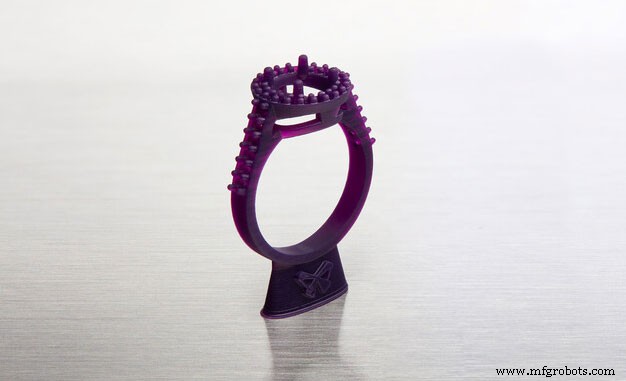
图片 1:使用 FormLabs 烧尽树脂的 3D 打印戒指。来源:FormLabs。
珠宝行业最受欢迎的 3D 打印机之一是来自著名制造商 FormLabs 的 Form3。这款 3D 打印机不需要高级技术知识,因此可以毫无困难地使用 . Form3 3D 打印机通过仅支持制造商开发的材料来限制其使用。 这可能是一个优势,因为不需要设置,配置参数和可修改的值被减少到最少,只需选择材料类型和一些基本参数。这将误差幅度降至最低。
下表显示了一些最流行的可燃树脂及其与 3D 打印机的兼容性:
| 树脂 | 制造商 | 技术 | 兼容性 |
|---|---|---|---|
| 可铸蜡 | FormLabs | 服务水平协议 | 表格 2、表格 3、表格 3L、表格 3+ |
| 可铸蜡 40 | FormLabs | 服务水平协议 | 表格 2、表格 3、表格 3L、表格 3+ |
| zWax 琥珀色 | UniZ | 液晶显示 | Slash、Slash 2、Slash 2 Plus、Slash 2 Pro |
| z蜡紫 | UniZ | 液晶显示 | Slash、Slash 2、Slash 2 Plus、Slash 2 Pro |
| 蓝铸原创 | Zortrax | 液晶显示 | UniZ、WANHAO、zortrax、ANYCUBIC、ASIGA、B9 Creator、FLASH FORGE Moon Ray、Prusa。 |
| 蓝铸X5 | Zortrax | 液晶显示 | UniZ、WANHAO、zortrax、ANYCUBIC、ASIGA、B9 Creator、FLASH FORGE Moon Ray、Prusa。 |
| 蓝铸 X10 | Zortrax | 液晶显示 | UniZ、WANHAO、zortrax、ANYCUBIC、ASIGA、B9 Creator、FLASH FORGE Moon Ray、Prusa。 |
| 牙模 | 哈茨实验室 | 液晶显示 | Formlabs、PEOPOLY、UniZ、WANHAO、zortrax、ANYCUBIC、ASIGA、B9 Creator、FLASH FORGE Moon Ray、Prusa。 |
表 1:烧尽树脂和相容性。来源:Filament2print.
每种材料都有不同的属性,需要不同的参数。 However, they all have a common characteristic:they have been developed to replace wax parts in the microfusion process, with a composition that achieves castings free of residues that could affect the final result of the parts.
Once the parts have been printed, they must be cured if the material requires it. This depends on the composition of the resin and the manufacturer's advice should always be followed to achieve an optimum result.
2- Wax tree
Once the parts are cured (in cases where this step is required), the removal of the backing can be carried out, always with great care. Sandpaper (400 grit or higher) or even a rotary tool with a polishing attachment can be used to achieve total removal of the support and a perfect finish.
To create the wax tree, a wax base is taken and attached to a rubber cover of the sprue. Small cylindrical wax rods are welded to the wax base using a heat tool. The 3D printed parts are welded to the other end of the bars.
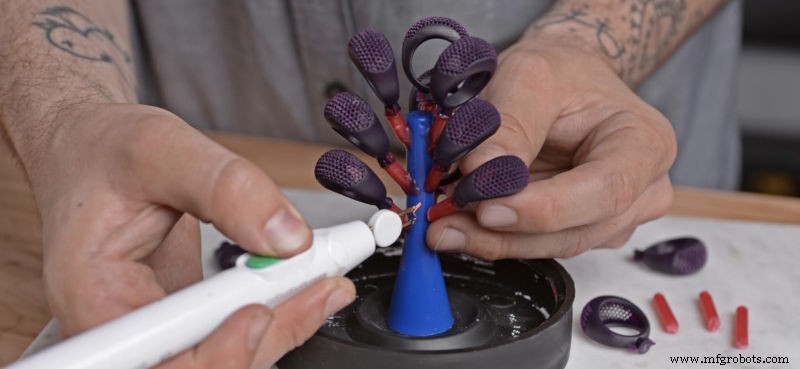
Image 2:Casting wax tree. Source:FormLabs.
This process is similar to that carried out in microfusion when casting traditionally carved wax pieces.
3- Mould preparation
The wax tree with the 3D printed parts in burn-out resin is to be placed inside a refractory steel cylinder, which is to be fitted into the rubber cylinder cover. In case the refractory steel cylinder has holes, these should be covered by wrapping the cylinder in adhesive tape.
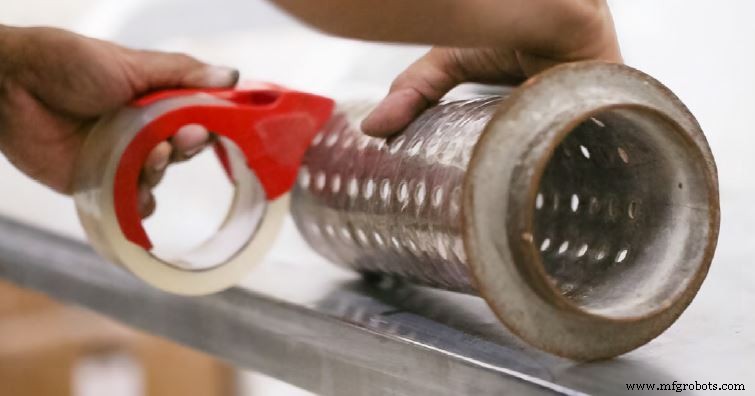
Image 3:Refractory steel cylinder shell. Source:Formlabs.
The casting must then be poured slowly, always from the side of the cylinder to avoid damaging the tree with the parts 3D printed with calcineable resin.
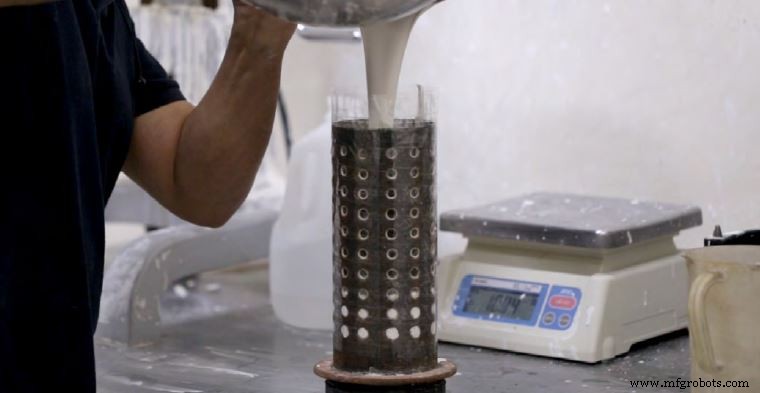
Image 4:Pouring of the casting into a refractory steel cylinder. Source:Formlabs.
When pouring the casting, it is possible that small air pockets may remain which can affect the quality of the final parts. For this reason, it is very important to carry out the degassing process in a vacuum chamber.
4- Burnout
The cylinder is placed in the oven following the time and temperature instructions recommended by the manufacturer. During this time, the wax will burn out without leaving residues, leaving the mould ready.
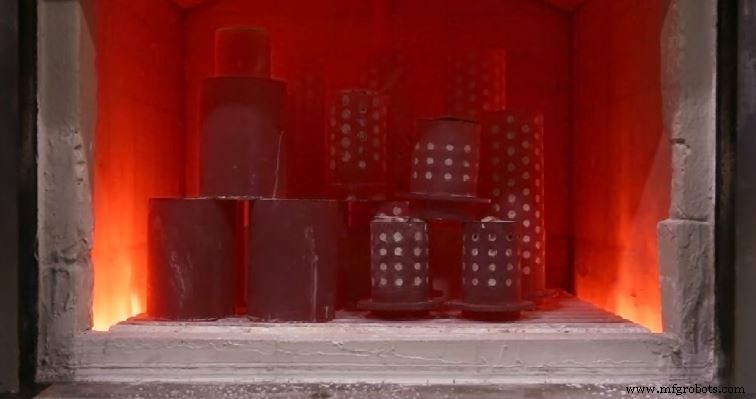
Image 5:Burnout process. Source:Formlabs.
The desired metal must then be poured into the mould to produce the final parts.
5- Washing and polishing
After casting, the mould is carefully removed from the furnace and immersed in water using tongs. During this process, the casting will melt, leaving the metal parts visible. Once washed, the metal parts are separated from the tree, polished and polished until the desired finish is achieved.
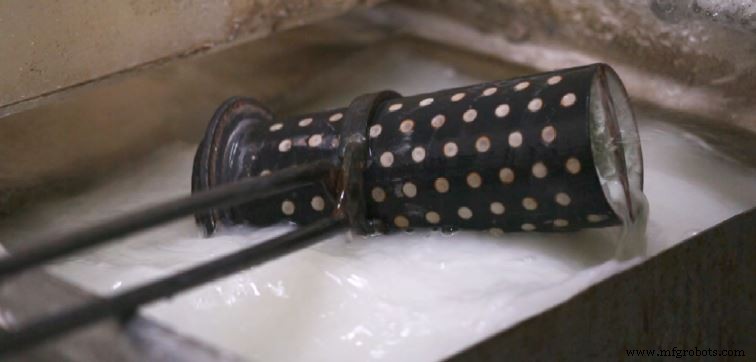
Image 6:Washing process. Source:Formlabs.
Once washed, the metal parts are separated from the tree, polished and polished to the desired finish.
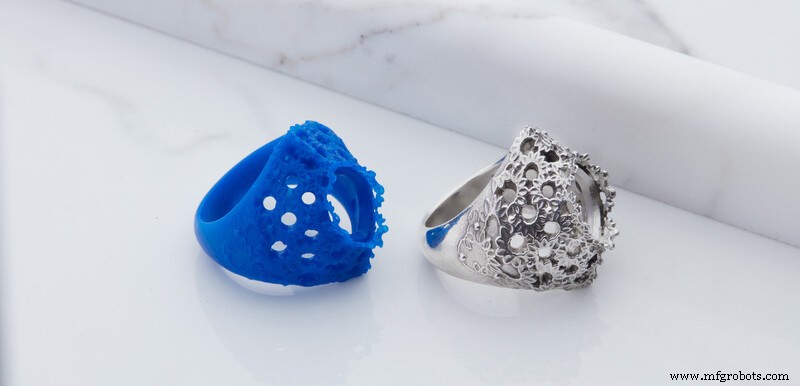
Image 7:3D printed ring with burn-out resin and silver ring after the microfusion process. Source:Formlabs.
The use of castable resins in the jewellery sector offers numerous advantages . Among others, it allows you to 3D print as many models as you want, quickly and with extreme precision . This results in a significant reduction in costs and production times.
3D打印


